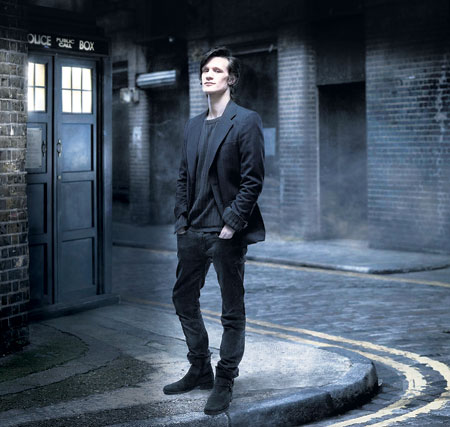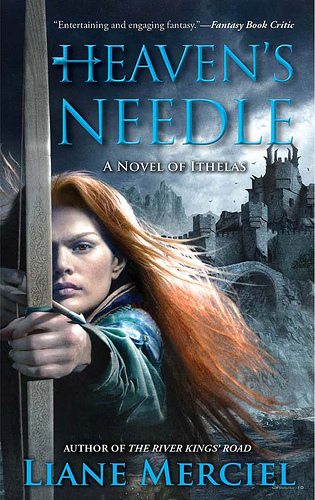April is the coolest month
With all due respect, T.S. Elliott didn’t know what he was talking about. Not only is April the month of my birth, the first month of consistent spring weather and the long-overdue return of baseball, but this particular April has a number of media releases I’m eagerly anticipating.
First up is the introduction of the HBO television series “Game of Thrones,” based on George R.R. Martin’s fantasy book. Martin’s been called the “American Tolkien,” but it might be more telling to call him a 21st-century Tolkien (for all that the first book was published in 1996). Plenty of people have noted the rise over the past decade of dark, morally ambiguous stories against the simpler morality plays of the past, and compared to Tolkien’s heroic magnum opus, Martin oozes dark and morally ambiguous. I won’t spoil anything for the uninitiated, but over his sprawling series, good people do terrible things, bad people do virtuous things, and success one day is no proof against the sudden reversal the next. And for all that Martin’s work is ostensibly fantasy, it’s light on magic and elves and heavy on the mud and muck of late-medieval Europe – the real Europe, and not the idealized Renaissance Faire version.
HBO, which also aired the ambitious series “Carnivàle” and “Deadwood” (plus the more famous “The Sopranos,” which I never got into), is producing Martin’s first book as a lavish, $60 million miniseries. Martin, a former TV writer, has been intimately involved. And judging by the 15-minute previous HBO has released, it’s going to be a wild ride:
Just a week after the April 17 debut of “Game of Thrones,” the BBC unveils the newest season of it’s long-running science fiction series, “Doctor Who.” A mass-market cultural icon in Britain, the Doctor is hardly known stateside, relegated to the province of geeks. Well, I’m a longtime resident of that province, and in the absence of a tourism bureau let me just say that the return of “Doctor Who” is the perfect time to visit.
 The core appeal of “Doctor Who” is its main character, a nameless alien who goes by the appellation of The Doctor. Largely (but not entirely) pacifistic, the Doctor scoots around space and time in a stolen time machine famously stuck (due to a broken “chameleon circuit”) in the shape of an old-fashioned British police box.
The core appeal of “Doctor Who” is its main character, a nameless alien who goes by the appellation of The Doctor. Largely (but not entirely) pacifistic, the Doctor scoots around space and time in a stolen time machine famously stuck (due to a broken “chameleon circuit”) in the shape of an old-fashioned British police box.
Because he’s usually not willing to come in guns blazing, the Doctor usually has to save the day through some combination of fast talking, advanced knowledge and sheer panache. The results are often wildly implausible even for science fiction, but fans of witty dialogue and quirky characters almost never come away disappointed. (The Doctor is my second-favorite fictional character, after Sherlock Holmes – who shares many of the same characteristics, minus the time machine.)
Most of the other famous characteristics of “Doctor Who” are simple expedience. His time machine looks like a police box because it’s cheaper than coming up with a new exterior every time the Doctor arrives in a new setting (particularly when the series was created in the 1960s.) He travels through time with “companions,” usually humans from present-day earth, as a way to bring audience surrogates along (as well as attractive female actresses to counterbalance the so-far-always male Doctor). The Doctor’s time machine, called a TARDIS, lets the BBC set each episode in a different time and place (about half the episodes are “historical,” often reutilizing the sets and outfits from BBC costume dramas). And the most well-known trait of the Doctor’s alien race, the Time Lords, is the most convenient of all: when a Time Lord dies, he or she can “regenerate” into a new body – providing the series a convenient way to fill the role with new actors. The current Doctor, Matt Smith, is the 11th to play the role.
 Under Smith and new showrunner Steven Moffat (who also has his hands on the BBC’s “Sherlock” and the new Steven Spielberg-Peter Jackson animated Tintin movies), “Doctor Who” has discarded some of the melodrama that former producer Russell T. Davies (“Queer as Folk”) brought to it and replaced it with a heightened sense of whimsy and more exploration of the various paradoxes of time travel. (Mostly the Doctor’s ability to travel through time and space simply allows him to flit to a different setting with every episode.) And my pretensions of detached intellectualism don’t prevent me from admitting that actress Karen Gillan (left) is probably the most attractive female companion in the history of the series. (Also, unlike some past female co-stars on the show, her character has a bit of a brain, too, though “Amy Pond” leans more towards snarky wit than genius – territory “Doctor Who” showrunners usually leave to the Doctor.)
Under Smith and new showrunner Steven Moffat (who also has his hands on the BBC’s “Sherlock” and the new Steven Spielberg-Peter Jackson animated Tintin movies), “Doctor Who” has discarded some of the melodrama that former producer Russell T. Davies (“Queer as Folk”) brought to it and replaced it with a heightened sense of whimsy and more exploration of the various paradoxes of time travel. (Mostly the Doctor’s ability to travel through time and space simply allows him to flit to a different setting with every episode.) And my pretensions of detached intellectualism don’t prevent me from admitting that actress Karen Gillan (left) is probably the most attractive female companion in the history of the series. (Also, unlike some past female co-stars on the show, her character has a bit of a brain, too, though “Amy Pond” leans more towards snarky wit than genius – territory “Doctor Who” showrunners usually leave to the Doctor.)
“Doctor Who” can degenerate into camp sometimes, even today, when the series has a vastly larger budget than its 1970s heyday, where sets were little more than dressed-up quarries and monsters were just men in rubber suits. But the writing is consistently top-notch – watch Moffat’s 2007 episode “Blink,” a 45-minute horror piece that stands alone as a brilliant work even for someone with no knowledge of “Doctor Who” – with fantasy author Neil Gaiman (“Coraline,” “American Gods,” “Sandman”) contributing an episode this season.
Before I get to the third and final April release I’m anticipating, I want to say in my defense that my interests do extend far beyond genre science fiction and fantasy, though I am fond of both. I flipped through the month’s movie releases looking for a general release picture I could preview – only to find that Oscar-bait “Hop” aside, the only movie that looked good coming out this month was “Source Code,” which is, naturally, a science fiction movie. I’m indulging a bit of a 17th-century history kick at the moment, but that’s not based on any new releases. So given my third feature here, feel free to judge me as a man of narrow tastes.
 Whereas both “Game of Thrones” and “Doctor Who” are, to varying degrees, big-budget, mass-market phenomena, the next is on here for a very personal reason: I know the author. Liane Merciel’s second fantasy novel, “Heaven’s Needle,” comes out April 26. I helped proofread a draft copy of the novel, and for fellow residents of the geek province, it’s a great read – dark fantasy, with strong horror overtones. Liane’s best strength as an author are her villains, and “Heaven’s Needle” plays to this by forcing her heroes into an unholy alliance with a truly sadistic fellow.
Whereas both “Game of Thrones” and “Doctor Who” are, to varying degrees, big-budget, mass-market phenomena, the next is on here for a very personal reason: I know the author. Liane Merciel’s second fantasy novel, “Heaven’s Needle,” comes out April 26. I helped proofread a draft copy of the novel, and for fellow residents of the geek province, it’s a great read – dark fantasy, with strong horror overtones. Liane’s best strength as an author are her villains, and “Heaven’s Needle” plays to this by forcing her heroes into an unholy alliance with a truly sadistic fellow.
As someone who spent much of his childhood reading books like this, it’s a little surreal to read one written by someone I know. And in fact, my proofing help on this one aside, I can even claim a tiny bit of credit for the series. Some years ago Liane was talking about how she was burned out on fantasy fiction, which she used to love. I suggested that she give George R.R. Martin a try (taking this post full circle) – his realism and dark style would appeal perfectly to her. I was right. Liane loved Martin’s series, got back into fantasy, and a few years later out popped what she referred to as her “nerdbook” – the prequel to “Heaven’s Needle,” “The River Kings’ Road.” (Also a good read; where “Heaven’s Needle” has some tinges of light horror, “River Kings’ Road” is a bit more straight fantasy.)
That’s about all the credit I deserve – neither my fiction-writing ability nor my attention span match up to Liane’s; she wrote both books in her spare time while also practicing law. That was so exhausting, she says she wants nothing to do with writing another novel for a good long time. I’m selfishly hoping that “Heaven’s Needle” is enough of a success that she gets tempted back to write another.